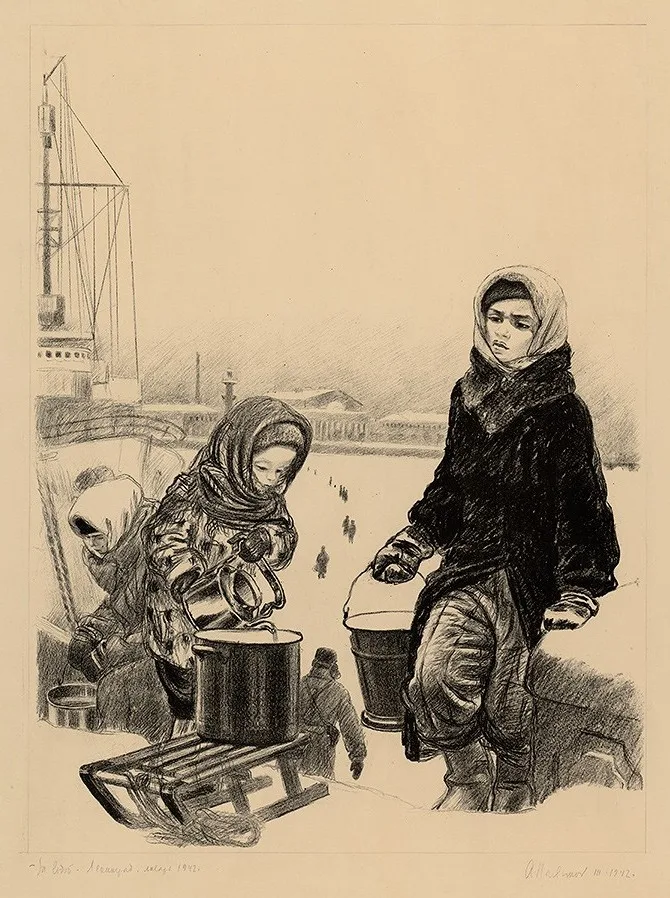В.Осеева, "Волшебное слово". 1953
Алексей Фёдорович Пахомов (1900-1973) - блестящий рисовальщик и превосходный мастер литографии. Одновременно с живописью и станковой графикой Пахомов занимался иллюстрированием книг. Уже в конце 1920-х гг. он оказался в числе лучших иллюстраторов детской книги. Его обаятельные персонажи неизменно отличались психологической достоверностью и социальной конкретностью.
Журнал "Чиж" №2, 1941. С.Михалков,"Мы готовились к параду"
"На Неву за водой", 1942-1944
"Молодой рабочий", 1943
Журнал "Мурзилка" №8, 1950. С.Михалков,"Наши дела"
В.Осеева, "Волшебное слово". 1953
Лев Толстой, "Котёнок". 1955
Лев Толстой, "Корова". 1957
Н.Некрасов, "Мороз, Красный Нос". 1959
Журнал "Мурзилка" №8, 1963. "Хорошая книжка"
Alexei Fedorovich Pakhomov (1900-1973) was a Soviet painter, lithographer, illustrator. He studied at the in Petrograd at the Stieglitz Art School (Russian: Художественно-промышленная академия имени А. Л. Штиглица "Stieglitz State Academy of Art and Design") and at Vkhutemas (Russian: Высшие художественно-технические мастерские "Higher Art and Technical Studios") in Moskow. From the middle of the 1920s, he began to achieve fame for the novelty and charm of his artistic language. In the late 1920s Pakhomov was among the best illustrators of children's books. His characters were invariably distinguished by psychological authenticity and social concreteness. The artist himself wrote: "the years of study were years of acquainting oneself with different artistic manners and different understandings of art. The Revolution caused a storm and a battle of styles: Academism, Neo-Academism, Impressionism, Pointillism, Cezannism, Cubism, Futurism, Suprematism – each movement confirmed its superiority. In the search for truth, I went through all the ‘isms’. At the foot of different teachers, I tried one, then another, being convinced that the first duty of any artist is to seek the style of the epoch".











